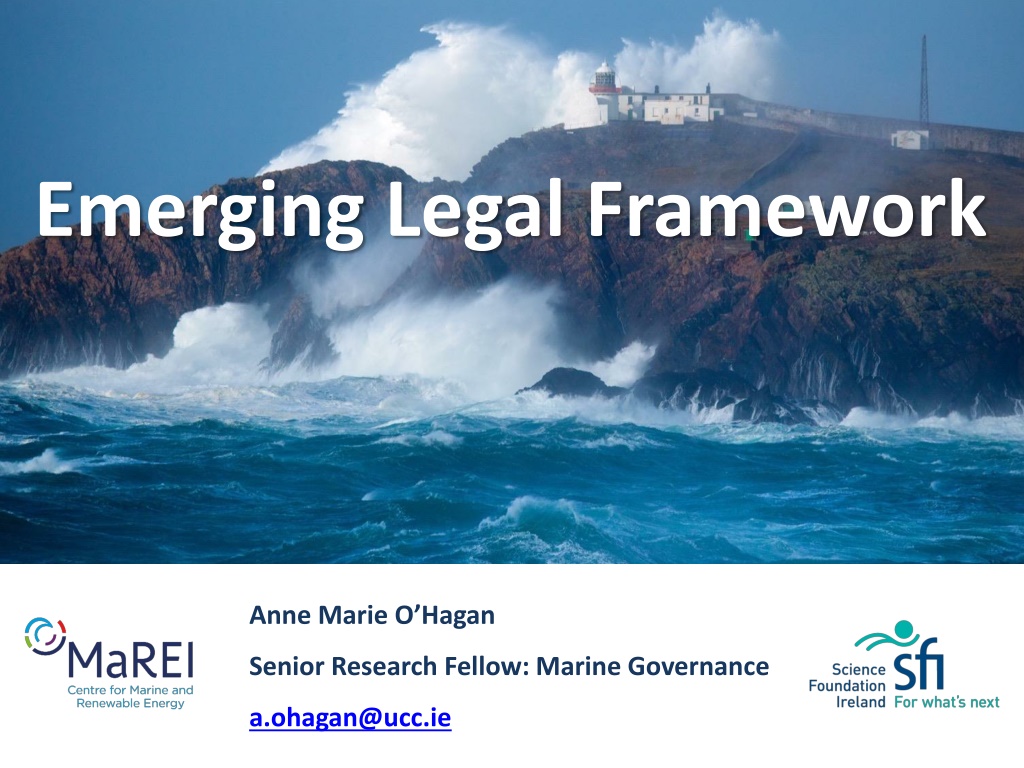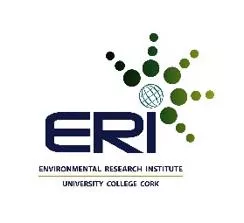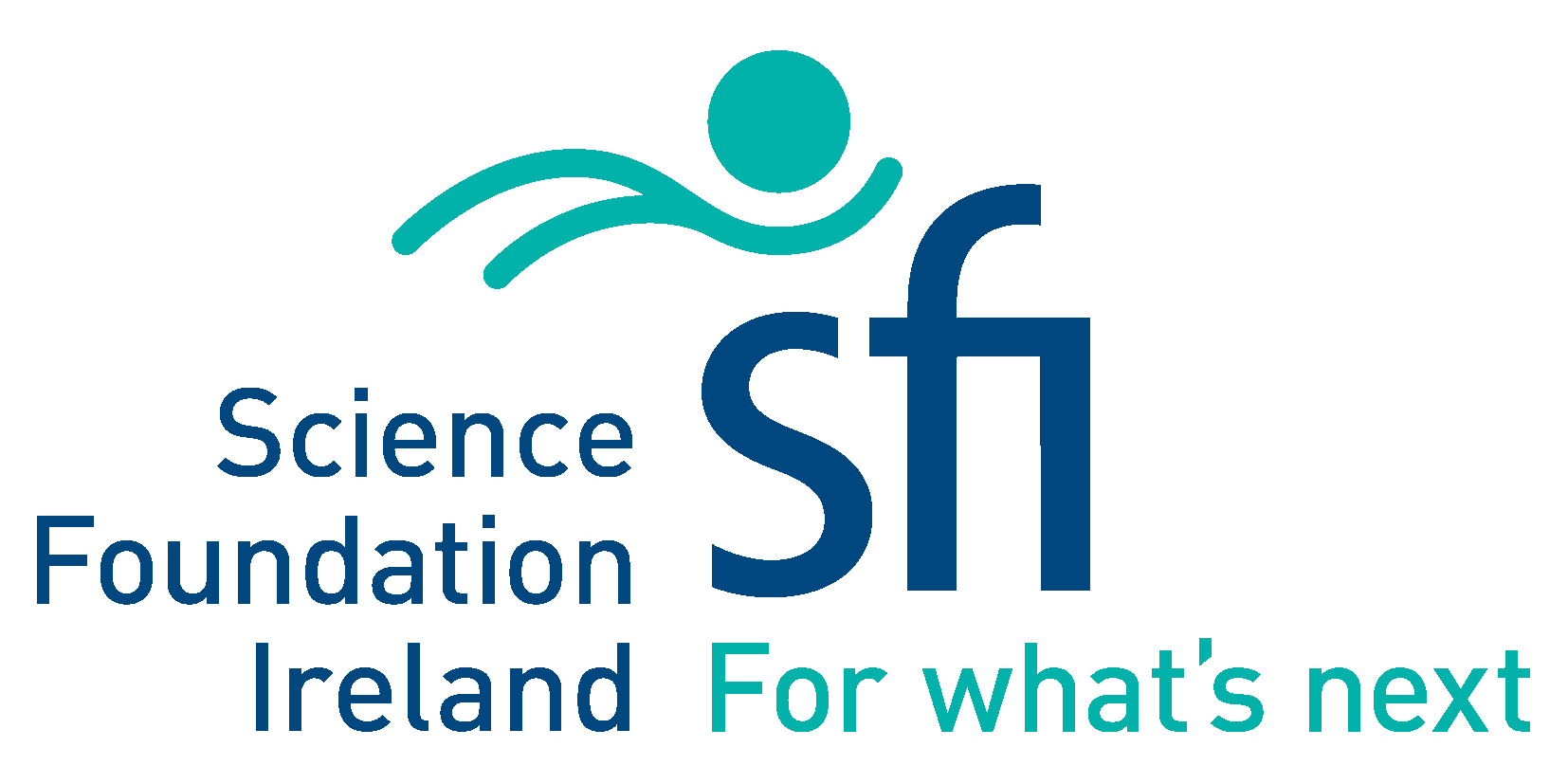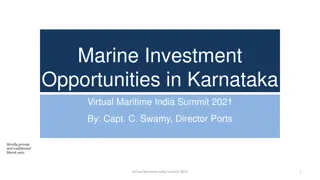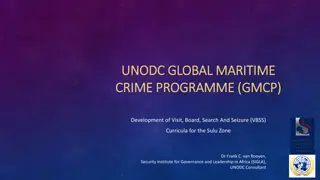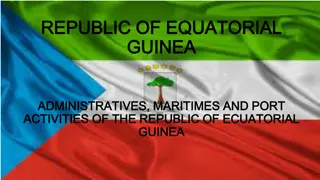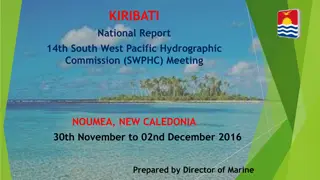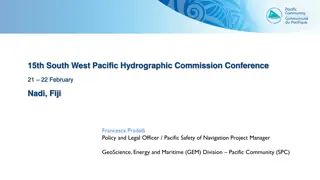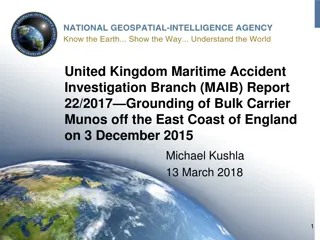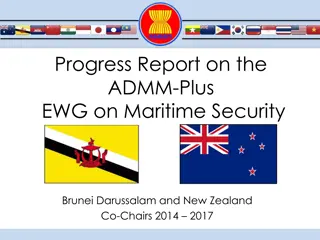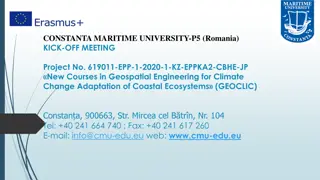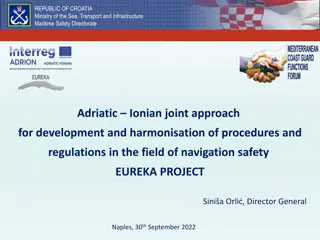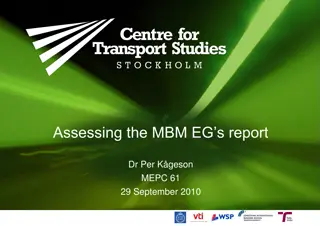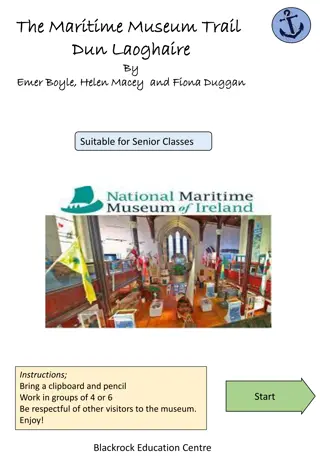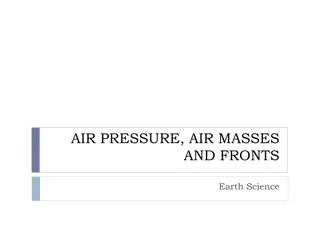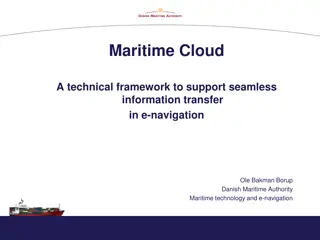Emerging Legal Framework for Maritime Governance
The content discusses the amendments made by the Maritime Area and Foreshore (Amendment) Bill 2013 to the Foreshore Act of 1933, outlining clear processes and procedures for development in marine areas. It further explores the Programmes for Government, guidance documents for ORE projects, and expectations for Maritime Spatial Planning Legislation in 2017 to align with the EU MSP Directive. The Department of Housing, Planning, Community and Local Government plays a crucial role in overseeing these legislative developments.
Download Presentation

Please find below an Image/Link to download the presentation.
The content on the website is provided AS IS for your information and personal use only. It may not be sold, licensed, or shared on other websites without obtaining consent from the author.If you encounter any issues during the download, it is possible that the publisher has removed the file from their server.
You are allowed to download the files provided on this website for personal or commercial use, subject to the condition that they are used lawfully. All files are the property of their respective owners.
The content on the website is provided AS IS for your information and personal use only. It may not be sold, licensed, or shared on other websites without obtaining consent from the author.
E N D
Presentation Transcript
Emerging Legal Framework Anne Marie O Hagan Senior Research Fellow: Marine Governance a.ohagan@ucc.ie
Consenting: Maritime Area and Foreshore (Amendment) Bill 2013 amends the Foreshore Act, 1933 Responsibility: Department of Housing, Planning, Community and Local Government and Department of Communications, Climate Action and Environment Needs to: provide a process and procedures that are clear to all parties; has allocated timeframes and responsibilities; enables different scales of development; permits multiple uses; fits within wider Maritime Spatial Planning process. Progress: Imminent Legislation Programme Spring/Summer Session 2017
Programme for Government 2011 Programme for Government: Annual Report 2013 2014 [17/9]: Bill expected to be published from the start of the D il Session to the beginning of the next Session 2015[14/1]: Listed as a Bill expected to be published during the Spring/Summer Session [22/9]: Bill expected to be published from the start of the D il Session to the beginning of the next Session Government Legislation Programme 2016
Guidance documents published in September 2016 for public consultation 1. EIS and NIS Preparation for ORE projects 2. Guidance on Marine Baseline Assessments and Monitoring Activities for ORE Projects (PARTS I and II) EIS and NIS Document Purpose is to assist developers and provide other interested parties with a basis for determining the adequacy of these statements. Policy context and existing legal framework: enable the designation of ORE zones and the granting of licences by the MCCAE for ORE projects . Roles of participants. Preparing the EIS and NIS: stages of the processes; differences; examples from elsewhere; topics to be included; determinations. Heavily referenced document with signposting to other published guidance.
Expectations for 2017 Maritime Spatial Planning Legislation transposing the provisions of the EU MSP Directive enacted in 2016. Directive provides that Member States have a Maritime Spatial Plan as soon as possible, and at the latest by 31 March 2021 (Article 15(3)). Department of Housing, Planning, Community and Local Government is the competent authority for MSP in Ireland. MSP will apply to the Foreshore, EEZ and designated parts of the Continental Shelf but not coastal or transitional waters subject to the planning provisions of Part II of the Planning & Development Act, 2000. There will be a number of opportunities for participation during the MSP life cycle. Details on participation opportunities will be made available on this website as they arise. (DHPCLG website).
Expectations for 2017 Amended EIA Directive Member States have to apply new provisions from 16 May 2017 at the latest. Aim of amended Directive is to improve the quality of EIA and the coherence and synergies with other EU legislation. New definition of EIA clearer steps. Introduces a one-stop shop for assessments deriving from EIA and nature conservation Directives. Member States may opt for coordinated and/or joint procedures. Lists new factors that must be considered in the EIA: factors: population and human health; biodiversity; land; and climate change. Information to be provided by the developer for projects listed in Annex II has changed: must now provide a description of any features of the project and/or measures envisaged to avoid or prevent significant adverse effects on the environment. CA must give reasons for its ultimate decision, along with how information from consultation has been incorporated and mitigation, monitoring and compensation measures, where appropriate. Introduces time-frames for different stages of the process.
Expectations for 2017 Aquaculture Licensing Review EC Strategic Guidelines for the Sustainable Development of EU Aquaculture > national multi-annual plans for aquaculture in each Member State. Recognised that licensing and administrative procedures AND lack of coordinated spatial planning are limiting sectoral growth > Member States have to put forward objectives for address these in their national plans. Aquaculture licensing in Ireland is a well-recognised problem ECJ Rulings against Ireland. Three person Independent Review Group to conduct an Independent Review of the Aquaculture Licensing Process and associated Legal Framework. Review Group invites written submissions or observations on matters within the Group s Terms of Reference until 10 February 2017. Might to useful to demonstrate the need for licences that can facilitate combined activities/uses.
Unlocking the potential of our marine and renewable energy resources through the power of research and innovation Web: www.marei.ie Twitter: @MaREI Centre Facebook: MaREI Centre
